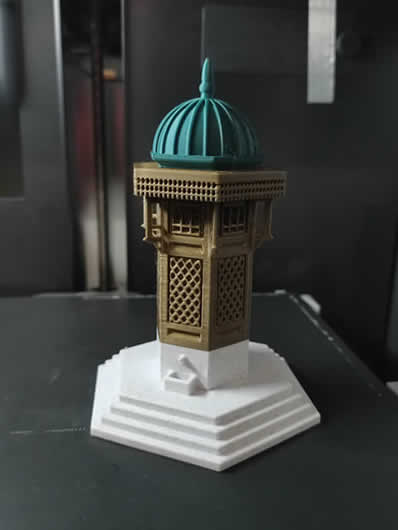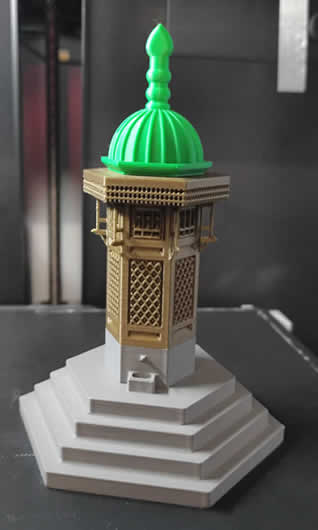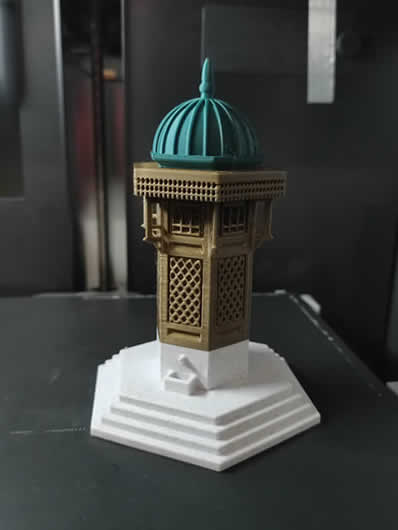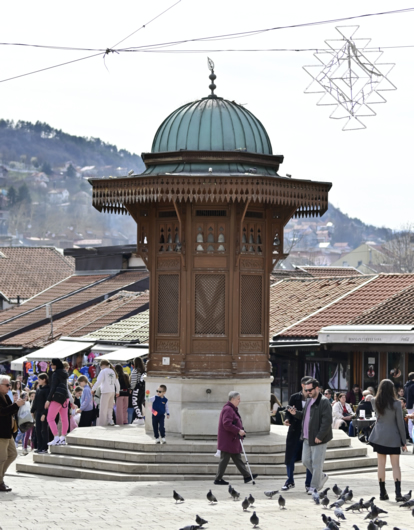- Dimension:8cm (W) × 9cm (H) × 12cm (D)
- Material:Made from eco-friendly, biodegradable plastice
- Design and production:Expertly designed for 12 hours, 3D printed in 7 hours
- Packing:Eco-friendly and recyclable; return it and receive a discount on your next purchase
- Maintenance instructions:Keep away from direct sunlight; handle with care, especially during transport
- Impact:With every purchase, you help restock local rivers and lakes
- Interactive feature:Scan the QR code and explore the rich history of Sarajevo
- Ecology:Part of the funds from the purchase of this souvenir will be used for restocking lakes and rivers in Bosnia and Herzegovina
ABOUT THE BUILDING
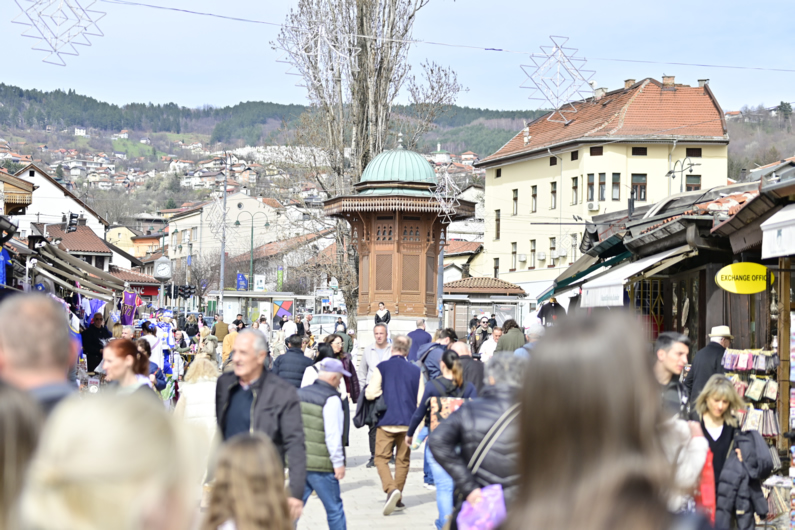
The capital of Bosnia and Herzegovina is adorned with numerous monuments, buildings, and bridges, but one example of Ottoman architecture stands out as the most recognizable symbol of Sarajevo. The fountain in Baščaršija, known as Sebilj, is a small fountain built in squares or crossroads as a water source for travelers and residents. Sebilj originates from Arab culture, and its construction in our country began under the influence of the Ottomans. Once, there were more than 300 Sebiljs in Sarajevo, but today, sadly, only one remains as a reminder of this important element of Ottoman culture.
This iconic architectural gem, with its domed roof and rich wooden decorations, often surrounded by pigeons and visitors, has become an essential stop for anyone exploring Sarajevo. Sebilj represents not only a place to quench your thirst but also a symbol of unity, hospitality, and cultural heritage. Its unique beauty and location in the heart of the city make it an inspiration for many artistic creations, including smart souvenirs.
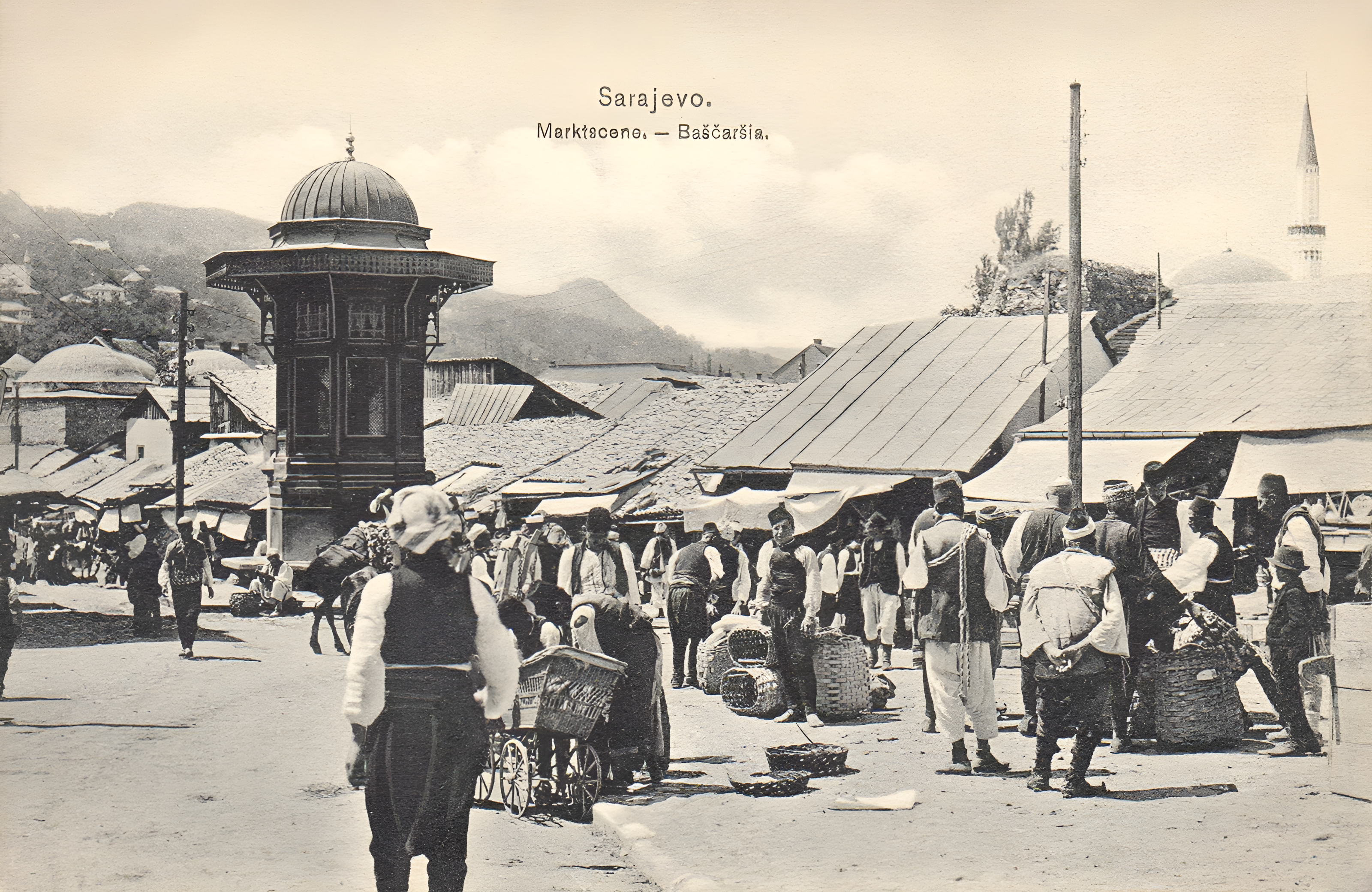
HISTORY
Thirty-seven years later, Eugene of Savoy burned Sarajevo and everything in his path, destroying even the Sebiljs, which served as a water source for newcomers and residents. In 1754, Hadži Mehmed-paša Kukavica financed the construction of a new Sebilj with his own means, which was located a little further from the site of the one we know today. This was the first square, closed Sebilj ever built in this region.
This Sebilj was destroyed with the arrival of the Austro-Hungarians in Bosnia and Herzegovina in 1891, but a quick order was issued to build a new Sebilj due to popular uprisings. Thus, Aleksandar Witek, the first Croatian chess master and architect, who had already designed the City Hall in a pseudo-Moorish style, designed a new Sebilj in the same style, respecting the Islamic culture that was widespread in Sarajevo. The new Sebilj, with wooden details and a greenish copper dome, adorned Baščaršija and served its purpose by 1913.
The first restoration of Sebilj took place in 1981, and then a small intervention was carried out before the 1984 Winter Olympic Games in Sarajevo. The restored Sebilj lasted until 1992, when it was damaged during the aggression on Sarajevo due to the war in the region. It remained in this condition until 1997, when it was decided to repair and restore the wooden parts. The last restoration was carried out in 2006, when the copper cover was replaced, the water supply and drainage systems were repaired, and the wood was protected.
ARCHITECTURAL STYLE
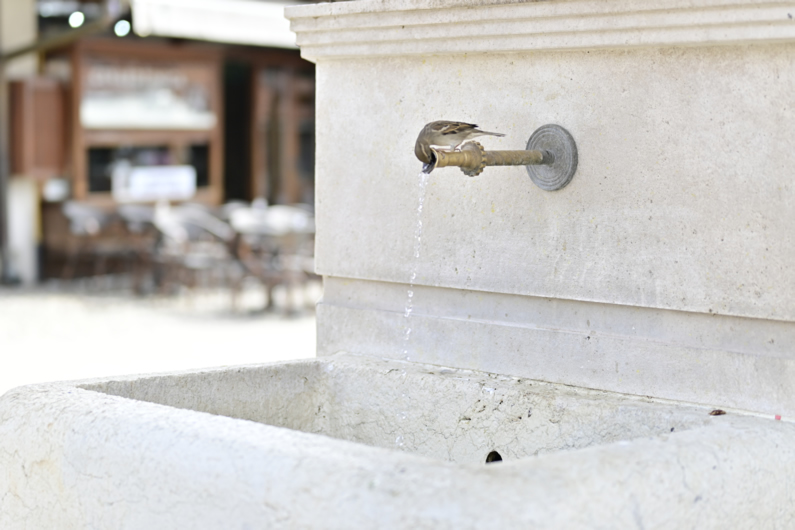
The second Sebilj in Baščaršija, built by the Austro-Hungarians and designed by the Croatian architect Aleksandar, was designed in the pseudo-Moorish style. This style appeared in the Balkans at the end of the 19th century with the arrival of the Austro-Hungarians and the conquest of these territories.
The pseudo-Moorish style is a combination of Hellenistic and Ottoman cultures, and its distinctive character is expressed through numerous buildings in Sarajevo constructed during the Austro-Hungarian period. Therefore, the pseudo-Moorish style is a hallmark of the Austro-Hungarian period and is a recognizable symbol of the city of Sarajevo, which has gone through various cultural and architectural periods. The leader of this style is the City Hall in Sarajevo, also designed by Aleksandar, with its distinctive features of arches, ornamentation, vaulted domes, and horizontal lines in orange-yellow colors. Based on this style, Aleksandar also designed the Sebilj we know today, with its green copper dome, ornamental details carved into the wood, and two fountains.
MATERIALS USED TO BUILD SEBILJ
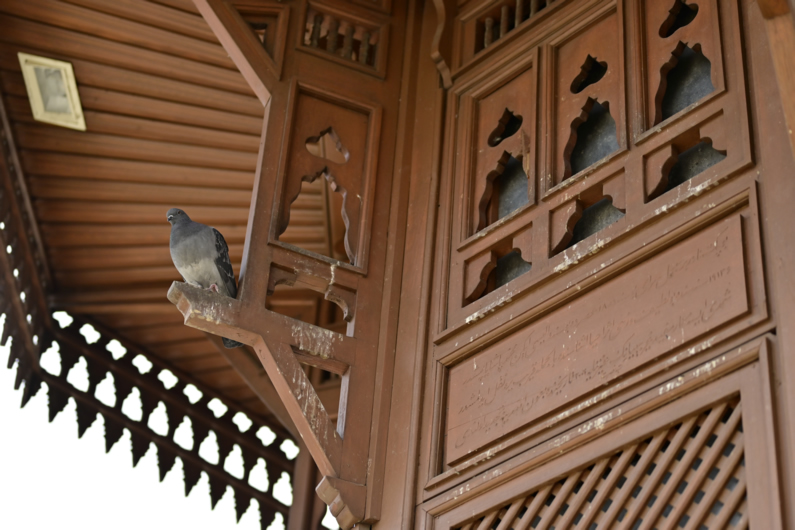
The Sebilj in Baščaršija, built in 1913, is constructed from three materials: stone, wood, and copper.
The foundation of stability and history on which Sebilj has stood firmly for over a century is made of stone. Stone is a symbol of stability and longevity, representing resilience through time, much like the city of Sarajevo, which has survived numerous historical challenges and remains a symbol of different cultures and unity.
Sebilj, as a public fountain, is not only a monument but also a source of water. Its body, constructed of wood, connects us with nature and reminds us of the harmony between man and the environment. The authentic spirit of the dark brown wood brings warmth that can be found in every corner of Sarajevo.
Noble and conductive metal, known to us as copper, is a generational legacy typical for production in the Balkan region. It has been used on the streets of Baščaršija for crafting items like coffee cups, cezves, and various household goods that have been used in these regions for centuries. Copper, with its dark green dome, symbolizes the rich past and carries numerous everyday life and love stories of the people of Sarajevo and passing travelers.
These seemingly simple materials, used for centuries in the construction of homes and landmarks, have been employed to create one of the greatest symbols of the capital city of Bosnia and Herzegovina. The strength of stone, the warmth of wood, and the nobility of copper are the essential characteristics not only of Sebilj today but of the entire homeland of our country.
A Short Story
For 30 years, our city’s market square has been graced by a golden fountain with wooden ornamental details, providing water for both locals and passing travelers. The copper dome is a testament to the many daily stories of hundreds of people moving freely through Baščaršija, searching for what they need. Old man Husein, every morning after the dawn prayer, prepares his copperware to bring it out onto the street in front of his small shop. Baker Mustafa, together with his wife Rapka, prepares warm bread and rolls at four in the morning, which the entire neighborhood will take before the midday prayer call. Sebilj witnesses all of these events every day, absorbing the various scents of delicious burek and sweet baklava, the sounds of the call to prayer, the chatter of the market people, and the loving glances of young couples who meet near the fountain.
At least that’s how the mornings used to look until four years ago. Today, it is no longer the same. Since the war began a few years ago, everyone has retreated, carefully following the events in Sarajevo. Our beloved city has become the crossroads of different interests, where many of my fellow citizens sadly lost their lives defending the interests of the local population. Many say that the war is nearing its end, that the Nazi forces are slowly weakening, but all I can think about is my dear one, who is somewhere out there with the partisan forces, trying to liberate Sarajevo. My family doesn't know about him… in fact, no one except Sebilj knows that he and I have secretly been meeting for the last six years. We started as children at 16, meeting secretly in the shade of the fountain and talking daily about the happenings and mishaps in the neighborhood. We shared both the good and the bad, ate sweet baklava from Aunt Esma, talked about our favorite music and books, and over time, we started sharing more intimate moments.
We planned to get married and confess our love for each other to our families, but then the war came to our area, and since then, nothing has been the same. As a grown man, strong and healthy, he was called to be part of the resistance against the fascists and Ustashe, and he agreed. And so, I haven’t seen him regularly as I once did. From time to time, when he gets an opportunity, we secretly meet next to our dear old Sebilj and talk for hours in the shade about how beautiful things used to be. We plan our future, how our house will look, and how many children we will have. Not all of the details match, but that doesn't bother us. What we agree on is that we love each other.
I only wonder how many stories like ours Sebilj has heard. I’m sure that within that greenish dome, all of our plans from the last six years are stored. It has heard what color curtains we want, what dishes we will make for the Eid gatherings, and what our children will be named. If only I could ask Sebilj if he has noticed how much my dear one has changed since the war started and how much he has deteriorated in these four years. Sometimes I look at him and can't believe how much we've both grown in every way. His once gently green eyes are now full of grayness and melancholy, his smile is no longer as bright as it once was but rather serious and somewhat artificial, as though he’s doing it just to convince me that the situation is good and that things are going in our favor.
I believe Sebilj sees this every time we meet. God, I don’t even know if he’s still alive as I tell you this story, looking at my beloved fountain. I only hope he’ll send me a message through my neighbor’s son and invite me for a meeting, because we haven’t seen each other for a long time.
I better hurry. My mother asked me to bring some potatoes from Aunt Fatima to make some food. Looking at Sebilj, I remembered many beautiful memories and felt nostalgic. I wonder if Sebilj will continue to be a symbol of our city after the war ends, a symbol of love, unity, strength, and solidarity. I’m sure it will, and perhaps in a century or two, it will tell the stories of the joys and troubles of this beautiful little neighborhood to all future passersby.
